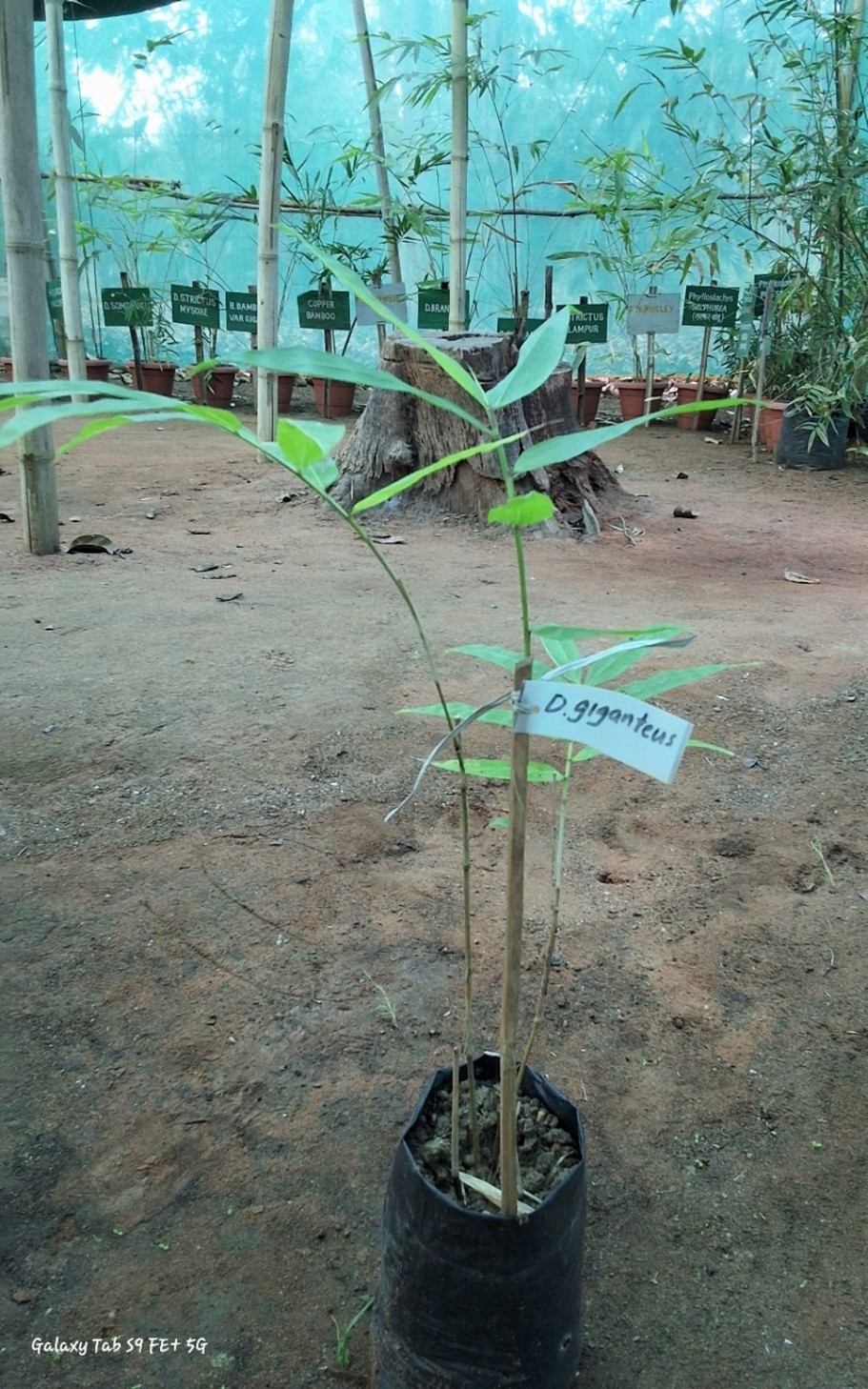Dendrocalamus giganteus

Dendrocalamus giganteus
Dendrocalamus giganteus commonly known as Giant Bamboo or Elephant Grass Bamboo, is a large and robust bamboo species that thrives in tropical and subtropical regions. This bamboo can grow to a height of 30 to 40 meters, with a diameter ranging from 20 to 25 cm. The culm starts as green and turns yellowish-brown as it matures, with internodes between 30 and 50 cm in length. The culm sheath is green when young, gradually turning brownish as it matures. The adaxial surface of the sheath is smooth and glabrous, while the abaxial surface is slightly hairy, with ciliate margins.
Dendrocalamus giganteus grows best at altitudes between 200 and 1,500 meters and prefers rich, well-drained soils, including loamy and clayey types. It thrives in regions with annual rainfall ranging from 1,500 mm to 3,000 mm, typically found in moist and fertile valleys of tropical and subtropical forests. Native to Southeast Asia, particularly India, Myanmar, Thailand, and parts of Indo-China, it has been introduced to various tropical regions for ornamental and agricultural purposes.
The leaves of Dendrocalamus giganteus are broad lanceolate, measuring 30 to 50 cm in length and 5 to 7 cm in breadth, with pointed tips. The inflorescence is a large, compound panicle with numerous spikelets. The empty glumes are ovoid to lanceolate, with visible veins, while the flowering glumes are larger, with smooth or slightly hairy edges. The stamens are exserted, and the anthers are glabrous, with a hairy style. Flowering is rare and occurs infrequently, typically every 30 to 50 years. Flowering has been observed in parts of India, Myanmar, and Thailand, though it is sporadic.
Seed production of Dendrocalamus giganteus is uncommon due to the infrequent flowering cycle, and seeds tend to have low viability. The species is propagated primarily by culm cuttings, clump division, offsets, and tissue culture.
This bamboo is valued for its large size and strength, making it ideal for construction applications such as building structures, poles, scaffolding, and bridges. The thick and strong culms are also used in furniture, handicrafts, and decorative items. Its long fibers make it suitable for pulp and paper production. The tender shoots are edible and commonly consumed in Southeast Asia. Additionally, its dense and high-energy wood is used as fuel in rural areas, and the bamboo's dense root system helps control soil erosion and stabilize the soil in vulnerable areas.
Listen Audio:
Need assistance? BRTC Faculty